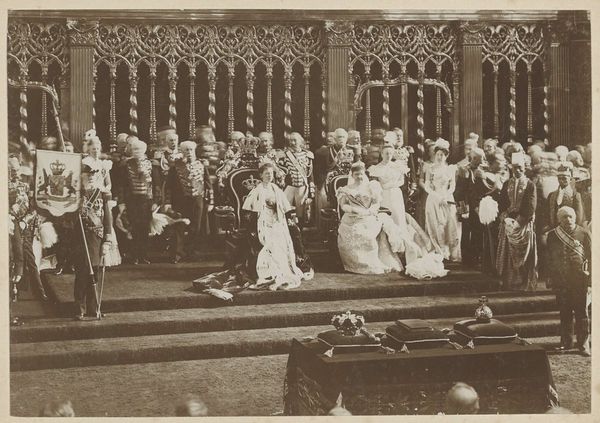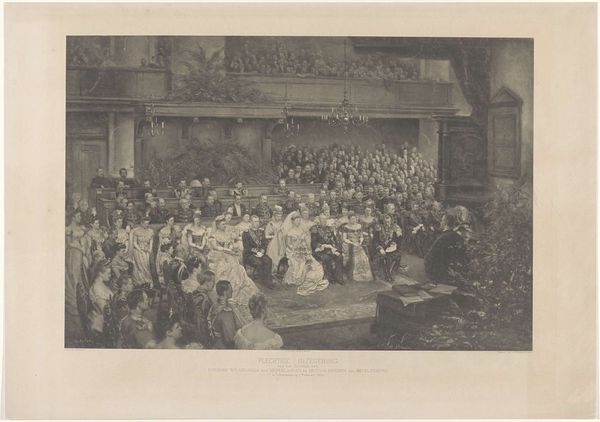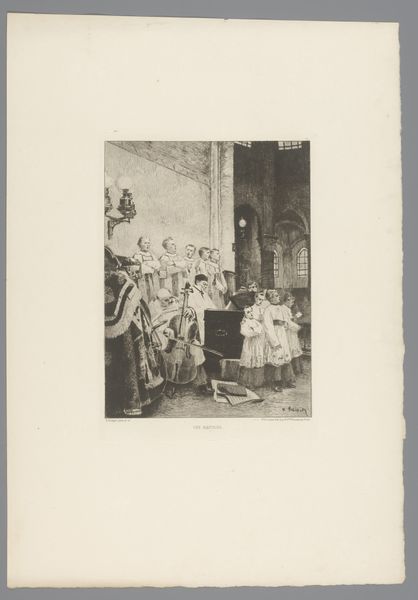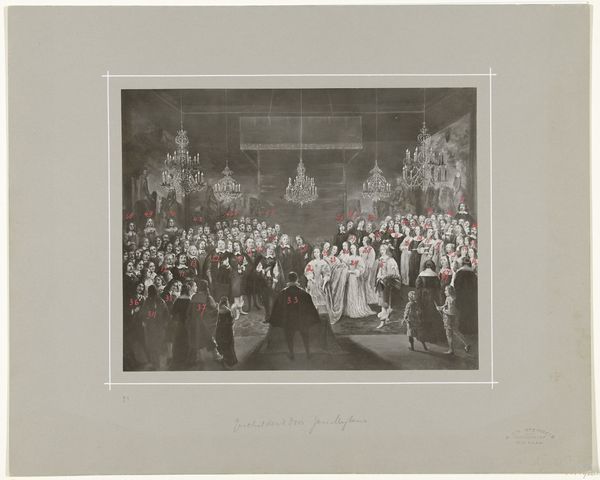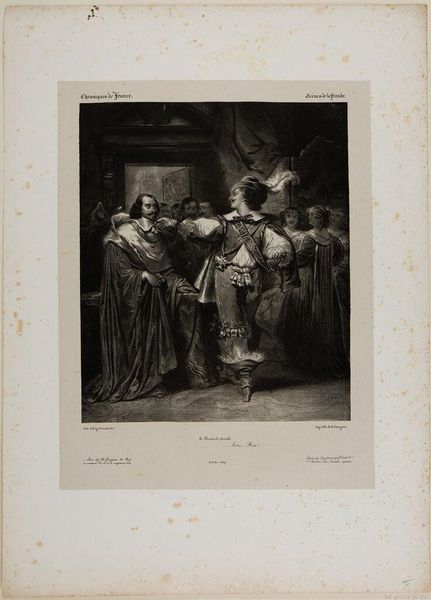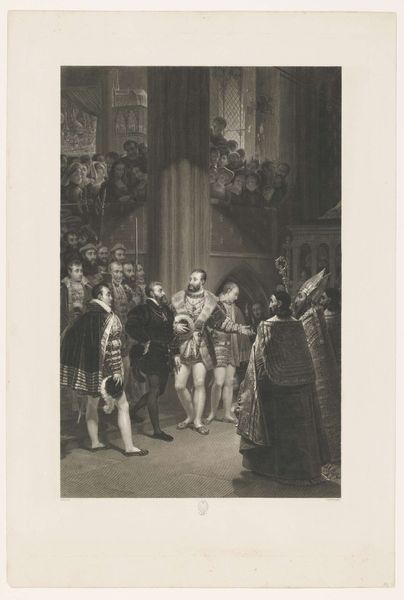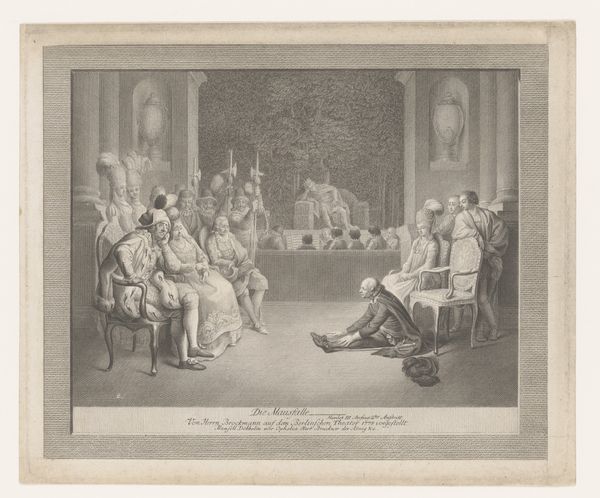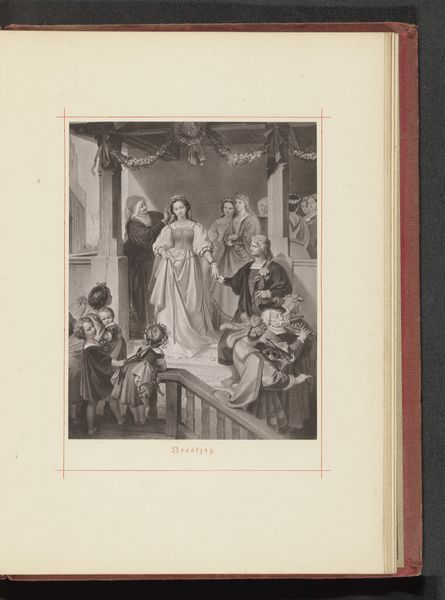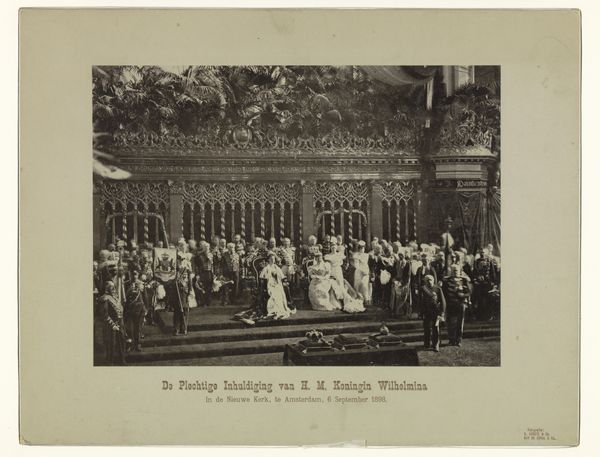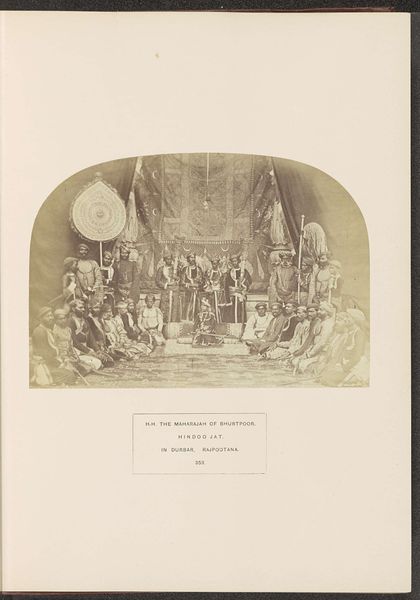
Inhuldiging van koningin Wilhelmina in de Nieuwe Kerk te Amsterdam (1898) Possibly 1898
0:00
0:00
photography, gelatin-silver-print
#
portrait
#
pictorialism
#
archive photography
#
photography
#
gelatin-silver-print
#
celebration photography
#
history-painting
#
realism
Dimensions: height 220 mm, width 262 mm, height 327 mm, width 370 mm
Copyright: Rijks Museum: Open Domain
Art Historian: We’re looking at a gelatin-silver print titled "Inhuldiging van koningin Wilhelmina in de Nieuwe Kerk te Amsterdam (1898)," possibly created in 1898 by R. Ebner. What catches your eye about this photograph? Curator: The grain is what really stands out for me, the almost hazy texture the gelatin-silver gives to the whole event. You can feel the sheer mass of the people, but also the kind of photographic labor involved to freeze such a monumental occasion. It speaks of ritual, and the relatively new rituals surrounding photography at that time. Art Historian: Absolutely, the ritual is key. Observe Wilhelmina at the center—her garments, each thread carrying dynastic weight. Photography provides an accessible format that makes a new monarch into a relatable, almost reproducible image for every subject, anchoring loyalty. Curator: But what kind of access did people really have? Photography in 1898 wasn’t exactly cheap. How did the materiality of this photograph and its potential reproductions help materialize and distribute power beyond the confines of the church, to, say, middle-class homes? Art Historian: The act of image-making, its proliferation, democratizes the symbolic weight of monarchy. Before mass media, representations of royal authority were far more controlled and fewer. Even this graininess, in its way, brings her closer to the people: a real woman in a real space. Curator: Interesting. I’m just thinking about the laborers behind it all – the manufacturers of gelatin-silver, the photographers, those who mass produced the final image. Wilhelmina’s power is intertwined with industrial progress. Art Historian: Precisely, Wilhelmina becomes both the emblem of a historical bloodline and a contemporary symbol of Dutch industrial might. Curator: So we have the inauguration, an age-old ceremony documented by a modern industrial product and a whole labor force we don't see. Art Historian: Yes, creating enduring symbols for a new era through the fascinating collision of labor, representation and history. Curator: All wrapped up in one fragile silver print. Food for thought.
Comments
No comments
Be the first to comment and join the conversation on the ultimate creative platform.

